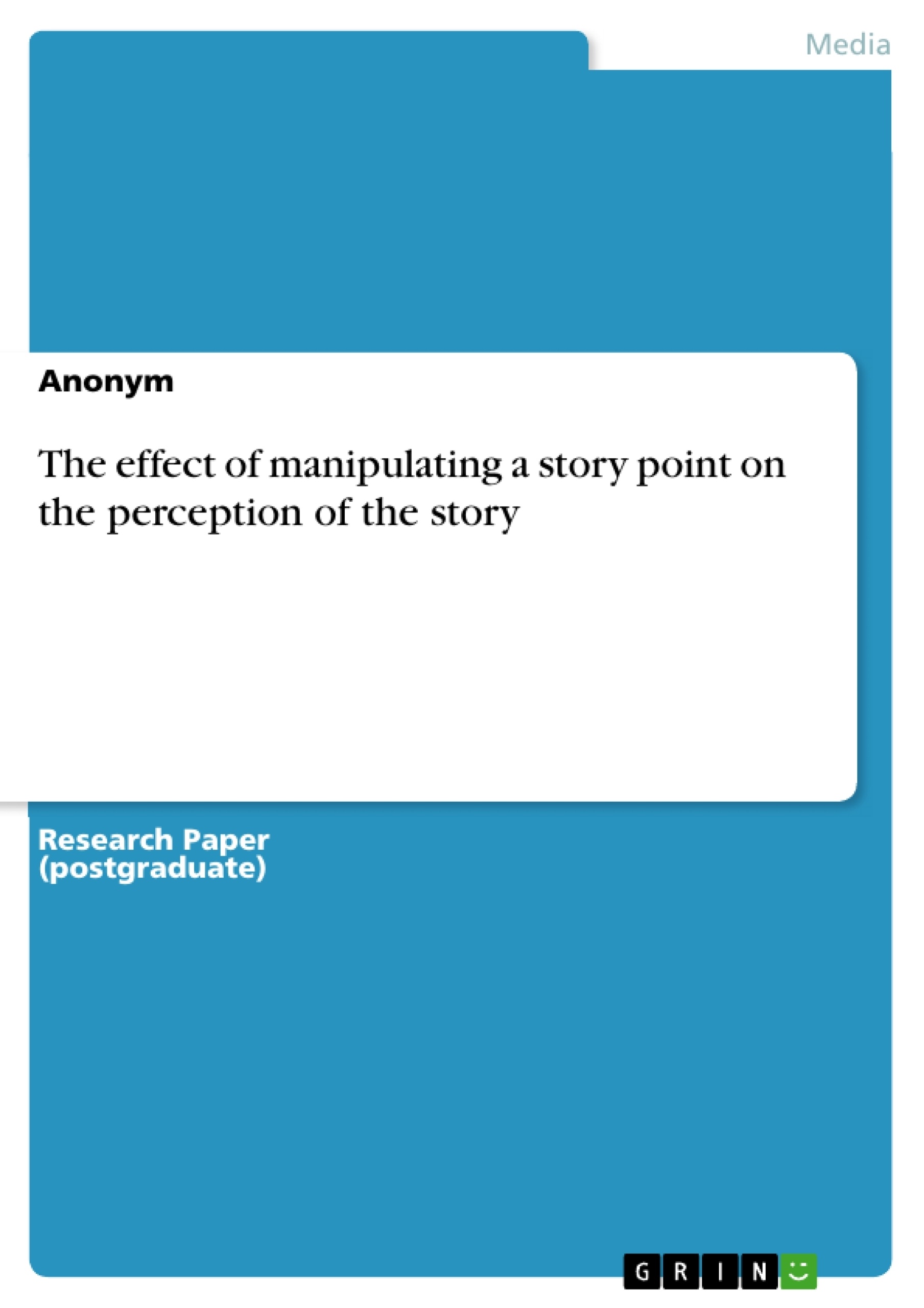The study introduced in the following paper examines the impact of the story point to the reader's perception of a story. Therefore, the basic understanding of the reading experiences such as transportation and its outcomes are explained. The main hypothesis is divided into six further hypothesis to examine every aspect.
To carry out the study, six stories were created and the story points manipulated. The audience was spread and conducted in a student setting and the study was realized through an online-survey. The results show significant differences in the perception of almost all variables. So, the story point has an influence on the perception. But this study was just a pre-test and therefore, it is necessary to include the results to a further study and to specify on several aspects.
Inhaltsverzeichnis (Table of Contents)
- Abstract
- Introduction
- Reading experience and transportation
- Consequences of transportation
- Method
- Participants
- Design
- Materials
- Procedure
- Results
- Discussion
- References
- Appendices
- Factor Analysis Table
Zielsetzung und Themenschwerpunkte (Objectives and Key Themes)
The study investigates the impact of manipulating a story point on the reader's perception of a story. It examines the role of narrative engagement, transportation, and perceived realism in influencing the reader's belief change and subsequent narrative persuasion.
- The relationship between narrative engagement and transportation
- The influence of perceived realism on narrative acceptance
- The consequences of transportation on the reader's perception and belief change
- The role of narrative meaning in shaping the reader's mental models and understanding of the story
- The impact of manipulating story points on the reader's perception of the story
Zusammenfassung der Kapitel (Chapter Summaries)
- Abstract: The study aims to explore the effects of manipulating a story point on the reader's perception of a story. It examines the role of narrative engagement, transportation, and perceived realism in influencing the reader's belief change and subsequent narrative persuasion.
- Introduction: This chapter provides an overview of the concept of narrative persuasion, highlighting the power of stories to influence individuals and societies. It introduces the key concepts of reading experience, transportation, perceived realism, and narrative meaning, and explains their significance in shaping the reader's understanding and response to a story.
- Reading experience and transportation: This section delves into the concept of transportation, explaining how readers become immersed in a story's world. It discusses the role of emotional engagement, attentional focus, text quality, and the reader's ability to create vivid imagery in facilitating transportation. It also examines the influence of perceived realism, both external and narrative, on the reader's engagement with the story.
- Consequences of transportation: This chapter explores the consequences of transportation, highlighting the ways in which the reader's perception and beliefs can be influenced by the narrative experience. It discusses the effects of transportation on the reader's physical surroundings, thoughts, and beliefs, suggesting that stories can play a role in shaping the reader's worldview.
- Method: This chapter outlines the study's methodology, including the participants, design, materials, and procedure. It explains how six stories were created and manipulated to examine the impact of story points on the reader's perception.
Schlüsselwörter (Keywords)
This study explores the key concepts of narrative engagement, transportation, perceived realism, narrative meaning, and the manipulation of story points in the context of reader perception and belief change. It draws on research findings from studies on narrative persuasion, transportation, and the influence of narratives on individual and societal beliefs.
- Quote paper
- Anonym (Author), 2015, The effect of manipulating a story point on the perception of the story, Munich, GRIN Verlag, https://www.grin.com/document/341357



